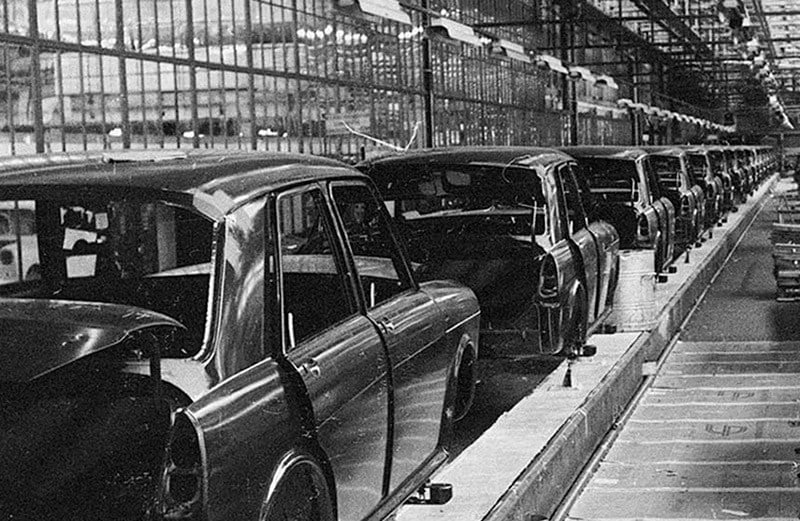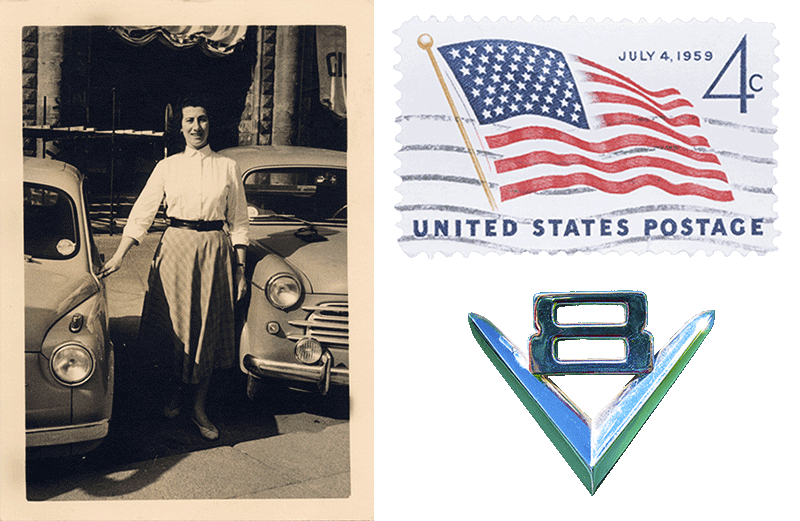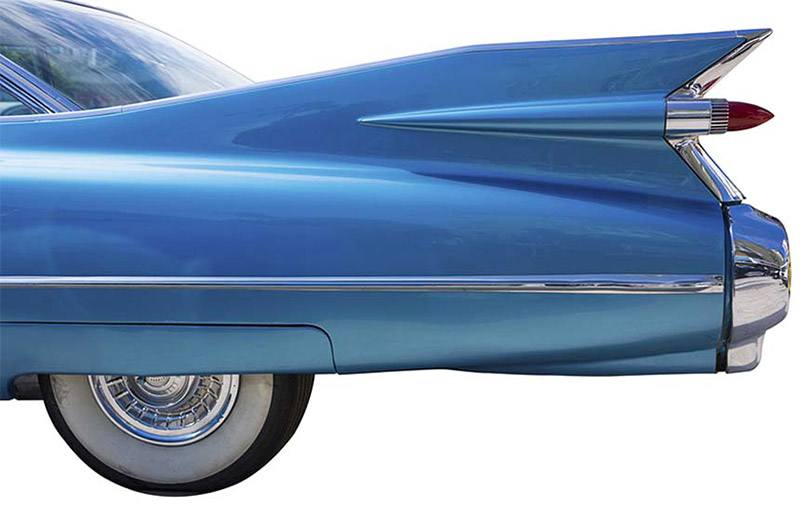How we made it here: American production narratives and their implications for brands
The past few years have seen a resurgence in American production as a result of—in no equal parts—the timing of the economic downturn, the American heritage movement that swept across categories, and changing production conditions at home and abroad. The cultural emphasis on investing in high-quality goods is closely tied to product quality, which can in turn become associated with brands as well, thus making production an important and potentially valuable tool for marketers. But this begs the question: how does a brand become synonymous with quality by telling a story of production—especially in a consumer environment that highly values yet closely scrutinizes such narratives?
This paper uses the context of the current reshoring trend to explore what happens when companies bring production home from overseas, the authenticity of the “Made in America” credential, and when and how these practices can add value to a brand—as well as when they can hurt a reputation rather than help it.
One of the defining features of the current American service economy—and an integral factor that enabled its evolution—is the shift to overseas production, which distinguishes it from the industrial era. Cheap labor abroad, lax foreign labor and trade laws, and a host of other factors made foreign production both practical and profitable, but shifts in global economies have reversed many of those trends. Now, rising labor costs and import taxes are making domestic production considerably more appealing. Add to that a cultural affinity for rousing American pride and the prospect becomes even more enticing.
Today, reshoring is becoming a dominant trend for a host of American companies. Defined as the process of bringing offshored production back from overseas, reshoring offers a number of benefits to domestic companies.1 As labor laws tighten in traditionally slack countries, the costs and benefits of paying workers in China vs. America swap, sometimes quite drastically. Changes in import and export tariffs and fluctuating transportation costs present another significant consideration for companies—and the scales are tipping in favor of cutting these costs. What’s more, as the purchasing power of the expanding middle classes in China and other foreign countries increases competition and demand, American companies feel even more pressure to rethink their production practices. The trend applies across product categories (though, admittedly, apparel and textiles have seen the most marked change).
The shift to domestic production is driven not just by the necessity of costs but by the prospect of a host of benefits as well. Proximity to production centers alone offers companies greater oversight and better insight into their supply chain, not to mention a shorter supply chain. That means American companies producing at home have more control and flexibility to respond to market changes and ever-shifting consumer demands. Combined with the benefits for U.S. GDP, these offer an abundance of marketable benefits for American companies.
Production practices naturally became an important way for a brand to give evidence of a product’s quality…and is a key trait that marketers for these brands promote.
While the practicality of reshoring provides rationale for the accountants, marketers should recognize the potential to build a brand at the same time. The greatest opportunity is taking advantage of the sweeping American heritage trend that has all but established itself as a defining characteristic of contemporary sensibility. A dominant cultural trend of the last eight-or-so years (perhaps picking up momentum from the upswell in American pride after 9/11), the heritage movement celebrates Americana and an idealized, simpler time vaguely inspired by our cultural past. The economic downturn of 2008 has been cited as a key driver that created the affinity for traditional, comfortable production practices (just look at the rise of pickling and home-brewed beer) as well as a demand for goods that connote quality.
Particularly predominant in fashion, this nostalgia for a simpler, “more authentic” way of life has spread throughout categories, influencing food trends among plenty of others. Production practices naturally became an important way for a brand to give evidence of a product’s quality—the detailed craftsmanship of a handmade sweater, for example, or the fresh taste of anti-industrial, single-cup coffee—and is a key trait that marketers for these brands promote.
The context of the American heritage trend makes American production a particularly “brandable” feature—one that many brands have successfully employed. And if the current landscape of heritage brands is any indication, incorporating a production story into the brand narrative can pay off for businesses large and small in a number of categories.
Take, for example, L.L. Bean, a well-established brand with a global presence and 100-plus-year history. The company produces products overseas and in the States, yet has taken advantage of the heritage trend to establish itself as a storied American brand by keeping the focus on its “Made in Maine” goods. The iconic (and, for the moment, trendy) Bean Boot represents a fraction of the company’s product portfolio but holds cultural relevancy that is far disproportionate. Successfully marketing the boot within the context of the current moment by emphasizing its production allowed L.L. Bean to add credibility, relevance, and authenticity to a brand that could otherwise have been overshadowed by the sheer breadth of its offerings. The boot has been so successful, in fact, that at the time of this writing, the boots are on backorder (also worth noting: despite the exceedingly high demand, L.L. Bean has refused to outsource production). And if it can work for a large, brand-savvy company, it should be no surprise that other companies can benefit as well.
Fake it ‘til you make it
A sub-brand of off-the-rack fashion chain J. Crew, Madewell took on its current form in 2004 when CEO Mickey Drexler purchased the rights to the original company, founded in 1937. Yet, as Dan Nosowitz (an heir to the founding family of the actual, original Madewell) notes, the company’s mid-2000s iteration has little to do with the original.
He argues that Madewell is “grasping to emulate some sepia-hued commitment to quality in the original company, some moral or ethical standard from better, more authentic times.” But that’s not what motivated his great-grandfather at all—his motivation was profit, and quality was a means to an end.
Still, the company’s success story suggests that profit is still both a motivator and a very achievable outcome when heritage—even if stretched and spun—is used correctly. The brand has crafted a compelling, cohesive narrative that fits with the value system of the heritage trend, allowing it to position itself for growth.2
*This is not, however, to suggest it is recommended.


This pro-Americana trend has helped more than traditional consumer brands, demonstrating the potency of cultural relevance as a powerful brand attribute. Cone Denim, an American denim manufacturer that produces for a range of companies, is one great example of a company that shifted from the B2B (or, rather, production-specific) space to the consumer stage as a result of this cultural movement. Perfectly capturing the tone and values that underlie the trend, Cone’s website proudly states: “Grounded in American heritage, Cone Denim [is] synonymous with authenticity and innovation.”3 The key words are all there, which (combined with the historical accuracy of the claims) helps give Cone the authenticity and legitimacy to which it lays claim.
By aligning its company history with the sensibilities of the movement, Cone has brought itself out of the background of other companies’ supply chains by demonstrating its value as a marketable brand of its own. And it’s paid off—J. Crew, in fact, carries a line of jeans featuring Cone denim, demonstrating the importance of production to a product story and, in turn, to a brand. Both companies benefit from the same production narrative: Cone can maintain its history and J. Crew can tell a story about supporting American production at a “storied mill” (or similar such marketing tactic).
It’s now clear that production is becoming an important part of a product’s story, and location is an essential part of that. But this goes beyond simply “America” in the abstract, and it doesn’t necessarily require the specificity of a hole-in-the-wall denim mill. Rather, a host of companies are successfully using the geographic origins of their products as a part of their overall brand story.
The luxury good company Shinola has, in the past few years, done an outstanding job of just that. Shinola uses Detroit as part of a powerful brand narrative that recasts classic cultural tropes of civic pride and bootstraps dedication to engender a good deal of good karma. Founded in 2011, Shinola produces watches—its core product line—as well as notebooks, leather goods, and even bicycles, all with premium pricing and available online and at select retailers. The brand’s marketing emphasis is on all-American production for all goods (the small selection of products it stocks from other brands is all homegrown) and made-in-Detroit production for its own lines. This provides Shinola a doubly impactful position: not only does it benefit from the burgeoning American heritage trend, but it gains do-gooder cred, too.
In this way, location can be a kind of charity association for a brand. Philanthropy can be a very marketable asset, but it’s usually tied to the product itself (take TOMS shoes or Warby Parker glasses). In the case of Shinola, the charity is employment, job creation, and production. And, politics aside, creating jobs for American workers to improve their standard of living tends to poll better domestically than similar efforts abroad. As Shinola’s Marketing Director, Bridget Russo, said to The Washington Post, the company was drawn to “the idea of Detroit as the underdog,” and noted that consumers “buy this company because they do good things in this world.”4 Consumers get to feel good about doing good—and the brand can capitalize on that association.
We can best see the positive impact of production-as-charity in the case of the auto industry, in which production is frequently tied to cultural and political identities. Beyond a simple “buy American” rallying cry to support the Detroit Big Three in the abstract, Ford and GM have both made moves to bring production plants back to the States in recent years. Even foreign companies with production in the U.S. can benefit from the positive buzz that goes along with creating American jobs (we’ll overlook, for now, the fact that Japanese carmakers seem to now be shifting production to Mexico for a number of cost-saving reasons). In an industry where the lines between foreign and domestic production are so clearly drawn, it should be no wonder that putting the right spin on a product’s origins can prove so useful when marketing a brand. Add the charitable association with job creation, and you’re in an even stronger position.
The industry (once) synonymous with “American”
When you first started reading this paper and came across the phrase “American production” or “Made in America,” we’d venture a guess that the American auto industry jumped immediately to mind. Unsurprisingly, this seems a common occurrence; in the US, where the auto industry began, production and American identity are inextricably linked. And yet, as you’ve also probably noticed, we’ve kept our discussion focused primarily in the retail apparel space. That’s no coincidence.
While it could easily spawn a PhD candidate’s dissertation of its own (and almost certainly already has), the rise and fall of the American auto industry and its correlation to the relationship between consumer culture and the shifting American cultural identity is a narrative ripe for analysis. Relevant to the current argument, meanwhile, is a seemingly simple question: how did an industry once synonymous with America lose its credibility, and can it take advantage of the current cultural movement to rebrand and make up lost ground?
A brief history of the industry to help ground us as we explore the issue: though it was the original market and enjoyed the commercial momentum of being “the first,” the American auto industry suffered at the hands of increasing competition from abroad, namely Japan in the ’80s. In what could be called a lapse of judgment at a defining turning point, the industry lost touch with the cache of what it meant to be “Made in America.” This assumed that American consumers simply wanted to buy more rather than buy well, and the automakers sacrificed quality to let consumers do just that. While that may fit well with the dominant cultural current of the ’80s, people noticed the change in quality. And as is wont to happen in any category with dissatisfied customers and a growing number of competitors, the alternatives flourished. The reputation of American-made cars was tarnished, to say the least.
Fast forward to the heritage movement and its emphasis on quality and the power of “Made in America” as a valued cultural symbol. Within this context, the auto industry should be a shoe-in to take advantage of a heritage intrinsically linked to the country’s development, coupled with the upswell in pride for American production…but it hasn’t.
The competition necessitates upping the ante to compete in terms of product—tech and design innovations, for example—but American car brands need another way to differentiate. Marketing, naturally, supplies a viable tactic, but it’s been underutilized up until now. The Ford Focus takes design cues from the Aston Martin, the Chrysler logo now resembles Bentley’s, but where is the Americana? Pickup trucks, positioned as ever for the workingman, have a tinge—but when the Toyota Tundra and other foreign competitors can easily—and successfully—adopt the same kinds of campaigns, the American brands lose steam.
The question is: can they reconcile consumers’ sepia-hued nostalgia for the past with their own troubled backstories and supplant them with a new, heritage-driven vision for their brands’ futures?



But what happens in an industry where the party lines aren’t as obvious? When it comes to consumer goods—be it apparel, CPG, even food—production and authenticity claims have traditionally been differentiators for smaller companies and newer brands. Concordantly, consumers tend to balk when larger or long-standing companies make these kinds of claims, like corporate pledges of sustainable production or ethical materials sourcing. The skepticism filters the brand’s message through a hesitant lens: ‘for years, you’ve represented X—I’m not ready to think of you as Y.’ The question becomes: can a big company pull off and successfully market a domestic production push?
Like it or not, every business keeps its eyes on the giant at the head of the pack, and that means when Walmart decided to stock goods produced in America, consumers weren’t the only ones watching.
As an exercise to consider this, we need look no further than the textbook example of big business: Walmart. In 2013, Walmart announced its commitment to invest an extra $250 billion in made-in-the-USA product to “grow U.S. manufacturing and encourage the creation of U.S. jobs” and “spark a revitalization.”5-6 It’s an interesting case, one that seemed auspicious at the outset: an initiative with the potential to cast the brand in a favorable light coupled with the infrastructure and chops to—just maybe—actually pull it off. Yet, on the other hand, a challenge; a brand synonymous with ruthless business practices and consumer expectations for competitor-crushing price structures. Capturing the skepticism, one critic called the move an attempt to “help move America’s putative manufacturing renaissance from rhetoric to reality”.7
To be fair to any brand, authenticity is frequently called into question when it comes to messaging, regardless of where it comes from (just think of our earlier Madewell example). Even media darling Shinola has received some negative press and accusations of having co-opted an identity it may not have earned.4So, Walmart’s challenges aren’t entirely unexpected. The added complexity of reconciling a discount retailer with a class of product that has, as many of our other examples suggest, established itself as part of the luxury market may make things more difficult, and the logistical challenges of reopening production facilities aren’t making things any easier.
Complicating matters even further is the clear difference in motivations of manufacturers and retailers when it comes to making, buying, and selling American-made goods. When Cone proudly declares that it produces its denim in America to do justice to “the entrepreneurial spirit of brothers Moses and Ceasar Cone,”2 the company can position itself as embodying that all-American, pull-up-your-bootstraps spirit. Shinola takes a similar position (if motivated more overtly by commercial potential than a desire to stick to its non-existent roots). In both examples, the motivations can be spun a bit more to cohere with the brand’s narrative, and thus become more marketable.
But when Walmart makes its ‘Made in America’ pledge, the move comes with a little more transparency and, by a similar token, skepticism. Like it or not, every business keeps its eyes on the giant at the head of the pack, and that means when Walmart decided to stock goods produced in America, consumers weren’t the only ones watching. As a retailer, Walmart’s relationship to its products is rooted in those it chooses to sell and, by association, endorse. So, despite their best intentions, retailers can only achieve so much proximity to the perceived authenticity of a manufacturer’s pledge, especially if the existing product lines are knowingly purchased from overseas. In contrast, we can look to our Shinola example: the company was founded on a pledge to stock American goods, so it’s a more authentic tale to tell (though the California or New England manufacturers that produce the goods Shinola stocks could be said to be better still).
We can glean from this example that newer brands will have an easier time reaping the marketing benefits of the heritage trend and the brand-boosting potential of American production if that can be woven into the product story. Without the baggage of past positioning or actions, these new businesses have a clean slate and a significant amount of creative potential. As always, a strong, differentiating position is an essential factor for driving success, and as the examples of Madewell and Shinola suggest, company size may not matter as much when the brand is on-point with positioning.
The only brands that can logically take advantage of the ‘Made in America’ trend are those associated with the values of the American heritage movement that stemmed it.
Comparing the Walmart example to L.L. Bean offers interesting insight into the takeaways for larger companies trying to capitalize on the trend or build a production story into their existing brand. Not surprisingly, the elasticity of a brand is the biggest determinant of whether or not a company’s actions will resonate with consumers’ understandings of the brand. Because Maine production is a part of the L.L. Bean brand promise, marketing that aspect of the brand is a smart choice. Large companies with an existing brand story congruent with the values of the American heritage trend likely will have the best luck when weaving domestic production and reshoring messaging into their narrative.
Granted, these examples represent a relatively small sample pool. Still, we can generalize a few key insights: large or small, the only brands that can logically take advantage of the ‘Made in America’ trend are those associated with the values of the American heritage movement that stemmed it. A long-standing history, an association with quality and high standards, a tie to Americana—these characteristics all give businesses brand-related rationale (in addition to the economic one) to bring production home. By a similar token, newer brands looking to play to the cultural trends of the moment should note the advantages of a positioning that relates to these values.
Those brands that don’t quite fit the bill, meanwhile, should be wary of shouting the American-made rallying cry. This is hardly meant to be a knock against offshoring, which obviously has economic forces driving it, not to mention plenty of potential benefits for the U.S. economy. Just because it makes economic sense for a business to bring production back from overseas, it need not be a central tenet of your business’ latest campaign. As is nearly always the case for a successful brand, consistency is key—if marketers are honest about their brand and what messages and strategy complement it, they’ll know what to do.
Selected sources:
- Conerly, Bill. “Reshoring or Offshoring: U.S. Manufacturing Forecast 2015-2016.” Forbes. September 2014.
- Nosowitz, Dan. “Something Borrowed, Something Blue.” BuzzFeed News. September 2014.
- ConeDenim.com
- Heller, Karen. “The luxury-goods company Shinola is capitalizing on Detroit.” The Washington Post. November 2014.
- “U.S. Manufacturing.” Walmart.com. http://corporate.walmart.com/global-responsibility/us-manufacturing.
- Edelson, Sharon. “Wal-Mart Moves Forward on Made in USA Push.” Women’s Wear Daily. October 2014.
- Kelleher, James B. “Wal-Mart’s ‘Made in USA’ push exposes strains of manufacturing rebirth.” Reuters. June 2014.

